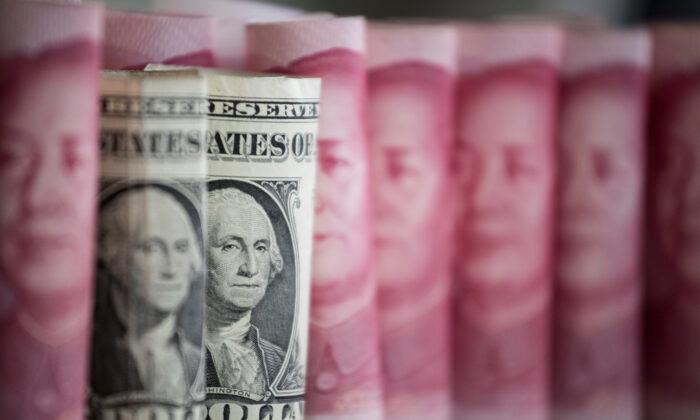The Kingdom is reportedly in active discussions with China to price at least a portion of its oil sales to the world’s second-largest economy in yuan.
In addition, officials are also considering the inclusion of yuan-denominated futures contracts—the petroyuan—in the pricing model of Saudi Arabian Oil Co., also known as Aramco.
The primary proposal has been a consideration for several years, but the Saudis’ discontent over Washington’s nuclear negotiations with Iran and the White House’s refusal to support the country’s military operations in Yemen has expanded talks, sources told the newspaper. They also added that Saudi leaders were surprised by the U.S. withdrawal from Afghanistan last year.
“The dynamics have dramatically changed. The U.S. relationship with the Saudis has changed. China is the world’s biggest crude importer and they are offering many lucrative incentives,” a Saudi official familiar with the talks stated. “China has been offering everything you could possibly imagine to the Kingdom.”

If approved, it would affect the greenback hegemony in the international energy market and spotlight Riyadh’s transition to Asian markets. But it would also rattle the Saudi economy and affect the riyal, which is pegged to the U.S. dollar. Experts further purport that it would threaten the Middle Eastern country’s revenues that are tied to U.S. Treasurys.
Today, close to 80 percent of global crude transactions are priced in dollars. Since the 1970s, the Saudis have primarily utilized the buck for oil trading, in exchange for U.S. security. President Joe Biden and his administration have been pleading with Saudi Arabia to pump more oil to help curb soaring energy prices.
West Texas Intermediate (WTI) and Brent crude futures have eased to around $100 a barrel over the past week, with some of the losses based on speculation that the Saudis would acquiesce and replace Russia’s supply.
At the same time, the move would increase the yuan’s prevalence in the worldwide petroleum market, since it purchases approximately one-quarter of its oil from Riyadh.
In recent years, China has pursued a more significant relationship with Saudi Arabia by working together to construct ballistic missiles and investing in Crown Prince Mohammed bin Salman’s various infrastructure projects.
Chinese leader Xi Jinping is scheduled to visit Saudi Arabia later this year.
The Anti-Dollar Axis
Whatever the case, this might be another example in the broader de-dollarization campaign undertaken by several nations across the globe.Putin found a partner in China to grow his efforts to abandon the greenback, with the two nations essentially establishing a de-dollarization agreement in 2018 and improving economic cooperation.
Russia and China could find another partner in this war on the dollar: India.
Although the Indian leadership has refrained from embracing a total de-dollarization strategy, the government and the Reserve Bank of India have employed various measures to trade with countries that have been slapped with stringent Western sanctions.
Moscow and New Delhi already possess a rupee-ruble exchange deal for Russian arms sales to India. The purpose was to skirt sanctions imposed by the Countering America’s Adversaries Through Sanctions Act.

India is also thinking about purchasing Russian crude oil, fertilizer, and other commodities at a steep discount through a rupee-ruble transaction. India is presently the world’s third-largest oil consumer and importer.
Prime Minister Narendra Modi hasn’t rebuked Russia’s invasion of Ukraine and India has chosen not to participate in the West’s sanctions.
Weapons of Financial Destruction?
As the United States and other Western countries employ so-called weapons of financial destruction, many market experts and economists are warning of a harmful fallout for the dollar.Last month, Goldman Sachs contended that exploiting the dollar for foreign policy objectives could force other nations to ditch the premier international reserve currency.
“[O]veruse of these powers could compel other actors to try to replace Dollar transactions, as Russia already did to some extent following earlier sanctions,” the financial institution wrote.
Jamie Dimon, the CEO of JPMorgan Chase, echoed these sentiments when he noted in an interview with Bloomberg TV that we need to be aware of “unintended consequences.”





